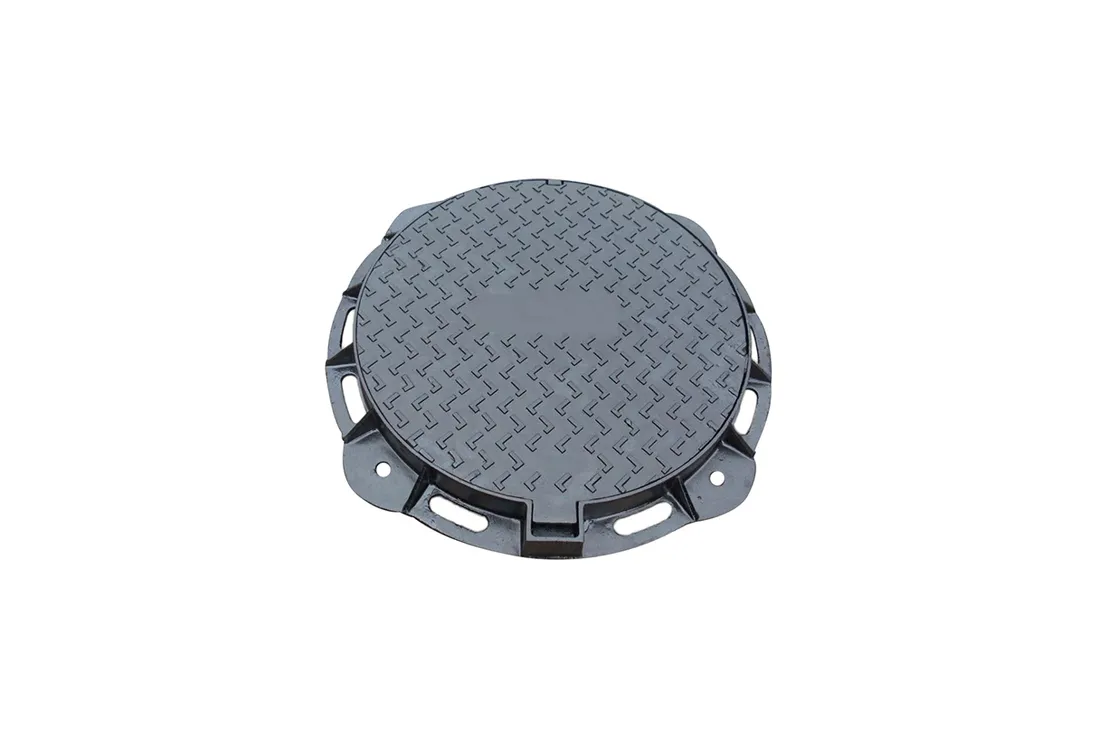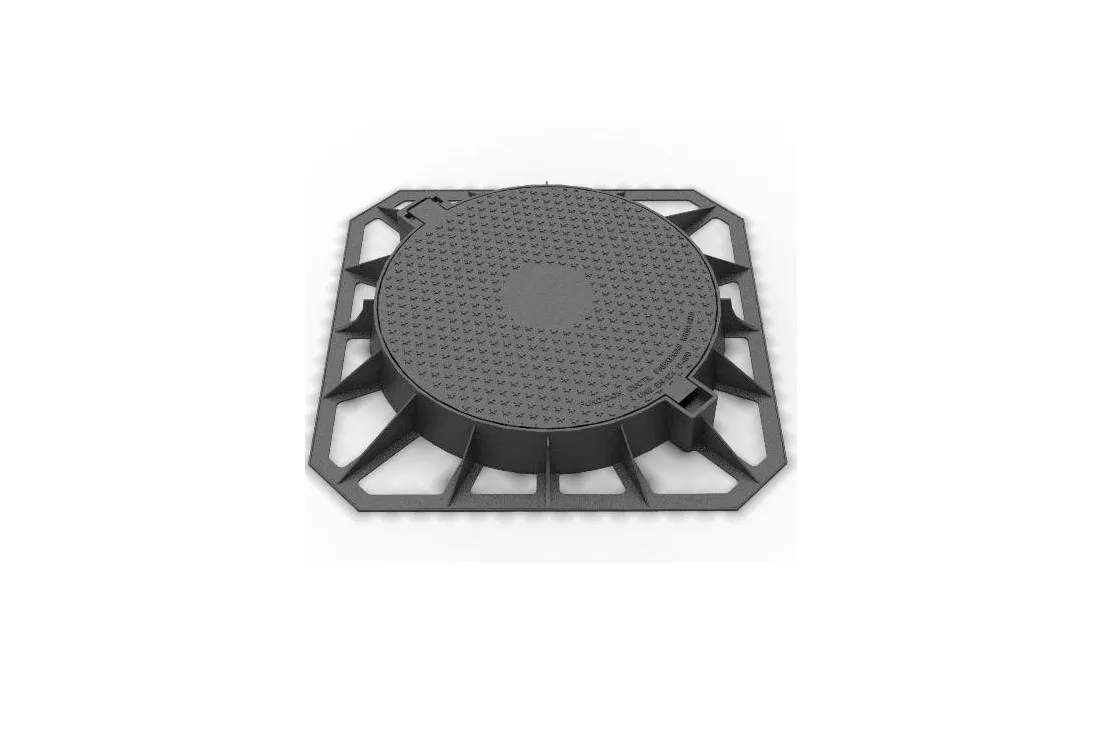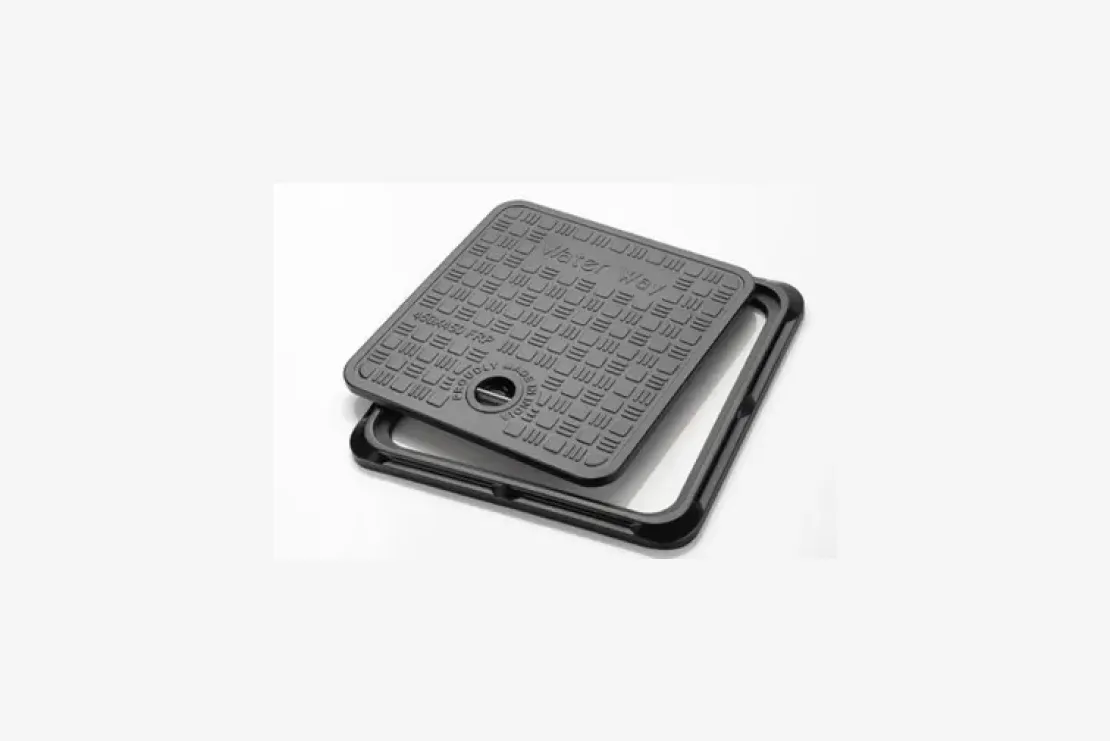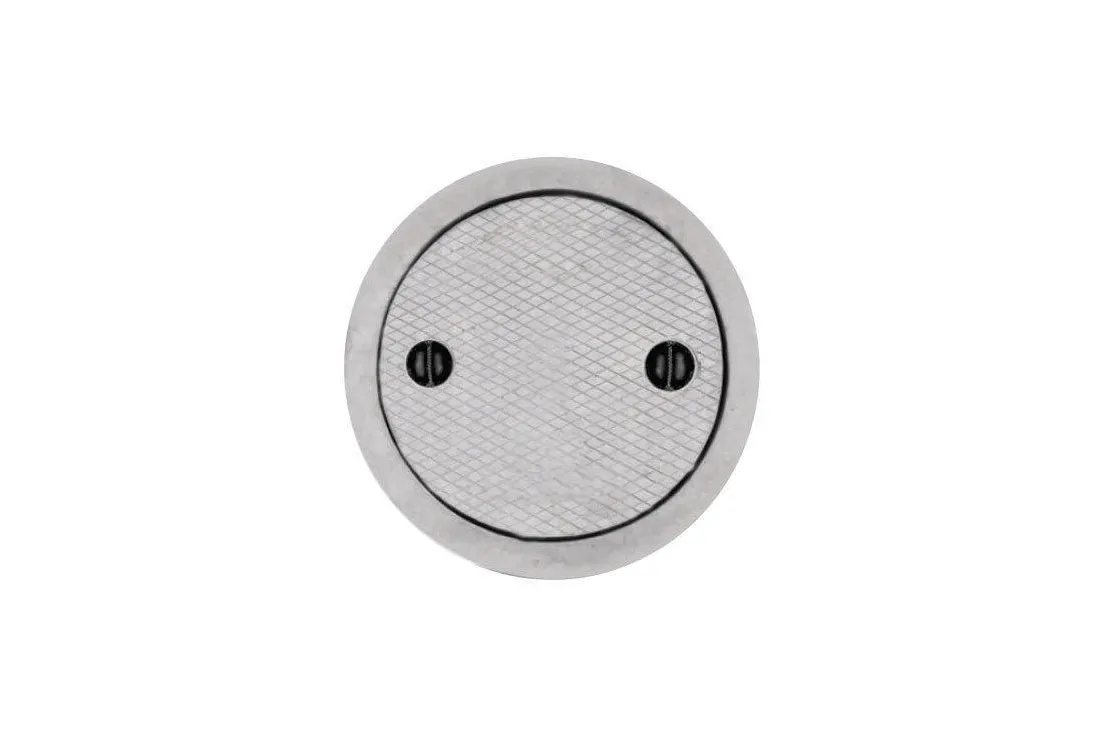Beneath our feet lies a network of tunnels, pipes, and channels that keep our cities functioning smoothly. At the heart of this infrastructure are manhole covers, providing access points to essential utilities. Each cover is uniquely designed to suit specific needs and conditions. In this comprehensive guide, we'll delve into the five types of manhole covers that play a crucial role in maintaining our urban landscapes.
5 Types Of Manhole Covers

Cast Iron manhole Cover

1. What Is a Cast Iron Manhole Cover?
Cast iron manhole covers are essential components of urban infrastructure, providing access points to underground utility networks. They are manufactured using molten iron, which is poured into a mold and left to cool, resulting in a robust, circular cover with various surface patterns for traction.
2. Advantages Of Cast Iron Manhole Cover
I. Exceptional Durability
Cast iron manhole covers are renowned for their longevity and resilience. They can withstand heavy traffic loads and harsh environmental conditions, making them a reliable choice for high-traffic areas.
II. Corrosion Resistance
Due to the natural properties of iron, these covers are resistant to corrosion and rust. This characteristic ensures they maintain their structural integrity over long periods, even in wet or corrosive environments.
III. Low Maintenance
Once installed, cast iron covers require minimal maintenance. They do not need frequent replacements or repairs, reducing the overall cost of ownership over their lifespan.
IV. Aesthetic Appeal
Cast iron covers can be customized with various patterns, designs, and coatings, allowing them to blend seamlessly with their surroundings. This makes them a popular choice in historical or architecturally significant areas.
3. Disadvantages Of Cast Iron Manhole Cover
I. Weight
Cast iron covers are notably heavy, which can make installation and removal labour-intensive. This may require specialized equipment and skilled labour, potentially increasing the overall project cost.
II. Theft Risk
Unfortunately, cast iron covers are susceptible to theft due to their scrap value. This is a concern in some areas, prompting the need for anti-theft measures such as locking mechanisms or covers with specialized designs that deter theft.
III. Limited Size and Shape Variability
Cast iron covers are typically manufactured in standard sizes and shapes. Customizing them to fit non-standard openings may be more challenging and costly compared to other materials like concrete.
IV. Cold to the Touch
In colder climates, cast iron covers can become very cold to the touch, potentially posing a safety hazard for pedestrians.
Ductile Manhole Cover

1. What Is Ductile Manhole Cover?
A ductile iron manhole cover is a type of access cover used in urban infrastructure. It is made from ductile iron, a type of cast iron that undergoes special treatment to increase its ductility and flexibility. This treatment involves adding magnesium to the iron, resulting in a cover that combines the strength of cast iron with increased flexibility.
2. Advantages Of Ductile Iron Manhole Cover
I. High Strength-to-Weight Ratio
Ductile iron manhole covers are known for their impressive strength-to-weight ratio. This means they can withstand heavy loads while being relatively lighter than traditional cast iron covers, making them easier to handle during installation and maintenance.
II. Excellent Corrosion Resistance
Similar to cast iron, ductile iron is naturally resistant to corrosion and rust. This property ensures that the cover maintains its structural integrity over time, even when exposed to harsh environmental conditions.
III. Reduced Risk of Breakage
The ductility of the iron used in these covers means they are less likely to break or crack under stress. This makes them particularly suitable for areas with heavy traffic or where there is a higher likelihood of impact.
IV. Long Lifespan
Ductile iron manhole covers have a long lifespan, requiring minimal maintenance and replacement. This durability translates to cost savings over the life of the cover.
3. Disadvantages Of Ductile Iron Manhole Cover
I. Higher Initial Cost
Compared to traditional cast iron covers, ductile iron covers tend to have a higher initial cost. However, this may be offset by their longer lifespan and reduced maintenance requirements.
II. Limited Availability
Depending on the region, ductile iron manhole covers may be less readily available compared to other types of covers. This could potentially affect lead times for projects.
III. Not Suitable for Extreme Conditions
While ductile iron is more flexible than
traditional cast iron, it may
still be susceptible to cracking under extreme conditions or very
heavy
loads. In such cases, other materials like reinforced concrete or
specialized composite covers may be more appropriate.
Read: Ductile Iron Manhole Cover: A Durable Solution
For Infrastructure Needs
FRP Manhole Cover

1. What Is FRP Manhole Cover?
FRP manhole covers, or Fiber Reinforced Polymer manhole covers, are advanced access covers crafted from a composite material typically consisting of fiberglass and resin. This combination results in a cover that boasts exceptional strength-to-weight ratio and resistance to environmental elements.
2. Advantages Of FRP Manhole Cover
I. Remarkable Strength-to-Weight Ratio
FRP manhole covers are incredibly strong despite being significantly lighter than traditional materials like cast iron or concrete. This makes them much easier to handle during installation and maintenance.
II. Corrosion and Chemical Resistance
FRP covers are highly resistant to corrosion, rust, and chemical exposure. They can withstand harsh environments, including areas with high moisture content or chemical runoff.
III. Non-Conductive Properties
FRP is a non-conductive material, which makes these covers ideal for areas where electrical safety is a concern. They can be used near power lines or in environments where electrically conductive materials are not suitable.
IV. Long Lifespan and Low Maintenance
FRP manhole covers have a long service life and require minimal maintenance. They do not corrode or degrade over time, reducing the need for frequent replacements.
V. Customizability
FRP covers can be easily molded into various shapes and sizes to fit specific requirements. This versatility makes them suitable for a wide range of applications.
3. Disadvantages Of FRP Manhole Cover
I. Initial Cost
The initial cost of FRP manhole covers can be higher compared to some traditional materials like concrete. However, this cost may be offset by the long-term benefits and reduced maintenance expenses.
II. Limited Availability in Certain Regions
Depending on the region and local suppliers, FRP manhole covers may be less readily available compared to more established materials like cast iron or concrete.
III. UV Sensitivity
Over extended periods of exposure to sunlight, FRP materials may undergo a process called UV degradation, which can lead to color fading and surface weakening. However, this can be mitigated with UV-resistant coatings.
Concrete Manhole Cover

1. What is Concrete Manhole Cover?
A concrete manhole cover is an access cover made from reinforced concrete. It is a sturdy, reliable, and cost-effective solution used to provide access to underground utility networks. These covers are typically precast or cast in place, allowing for customization in terms of size and shape
2. Advantages Of Concrete Manhole Cover
I. Cost-Effectiveness
Concrete manhole covers are generally more budget-friendly compared to materials like cast iron or ductile iron. This makes them an economical choice for projects with budget constraints.
II. Customizability
Concrete covers can be easily molded to fit specific dimensions and shapes, making them a versatile choice for a wide range of applications. This allows for customization to suit the unique requirements of a project.
III. Resistance to Corrosion and Rust
Concrete is naturally resistant to corrosion and rust, which ensures the cover maintains its structural integrity even when exposed to harsh environmental conditions.
IV. Sustainability
Concrete is an eco-friendly material as it can be recycled and repurposed. Using concrete manhole covers can contribute to sustainable construction practices.
3. Disadvantages Of Concrete Manhole Cover
I. Susceptibility to Wear and Erosion
Over time, concrete manhole covers may experience wear and erosion due to factors like traffic, weathering, and chemical exposure. This can lead to the need for more frequent maintenance and replacement compared to materials like cast iron.
II. Weight
While not as heavy as cast iron, concrete covers are still relatively weighty. This can make installation and removal more labour-intensive compared to lighter materials like FRP or plastic.
III. Limited Load-Bearing Capacity
Concrete covers may have limitations in terms of the maximum load they can support. In high-traffic areas with heavy vehicles, alternative materials with higher load-bearing capacities may be more suitable.
IV. Prone to Cracking
In areas with extreme temperature variations or frequent freeze-thaw cycles, concrete covers may be susceptible to cracking over time.
Plastic Manhole Cover

1. What is Plastic Manhole Cover?
A plastic manhole cover is an access cover made from high-density polyethylene (HDPE) or other durable plastics. These covers serve as essential components in urban infrastructure, providing access points to underground utility networks. They are known for their lightweight nature and cost-effectiveness.
2. Advantages Of Plastic Manhole Cover
I. Lightweight and Easy to Handle
Plastic manhole covers are significantly lighter than covers made from materials like cast iron or concrete. This makes them easy to handle during installation, reducing the need for specialized equipment.
II. Corrosion and Rust Resistance
Plastics are inherently resistant to corrosion and rust, making plastic manhole covers ideal for areas with high moisture content or chemical exposure. They maintain their structural integrity even in harsh environments.
III. Affordability
Plastic manhole covers are generally more budget-friendly compared to materials like cast iron or ductile iron. This makes them an economical choice for projects with budget constraints.
IV. Non-Conductive Properties
Plastic manhole covers are generally more budget-friendly compared to materials like cast iron or ductile iron. This makes them an economical choice for projects with budget constraints.
3. Disadvantages Of Plastic Manhole Cover
I. Limited Load-Bearing Capacity
Plastic manhole covers have lower load-bearing capacity compared to materials like cast iron or ductile iron. They are suitable for low-traffic areas, but may not be able to withstand heavy loads or high traffic volumes.
II. UV Sensitivity
Over time, exposure to sunlight may lead to a process called UV degradation, causing the plastic to weaken and potentially fade in color. UV-resistant coatings can help mitigate this issue.
III. Potential for Warping or Distortion
In high-temperature environments, plastic covers may be prone to warping or distortion. This can affect their fit and performance over time. Read: Ductile Manhole Cover Vs FRP Manhole Cover Vs Plastic Manhole Cover
Conclusion
Manhole covers are the unsung heroes of our urban landscapes, providing access to the intricate network of utilities that keep our cities running. From the robust cast iron covers to the innovative FRP options, each type serves a specific purpose in different environments. By understanding the strengths and considerations of each type, cities can make informed decisions to ensure the longevity and effectiveness of their infrastructure. With this knowledge in hand, we can continue to build and maintain cities that thrive beneath the surface